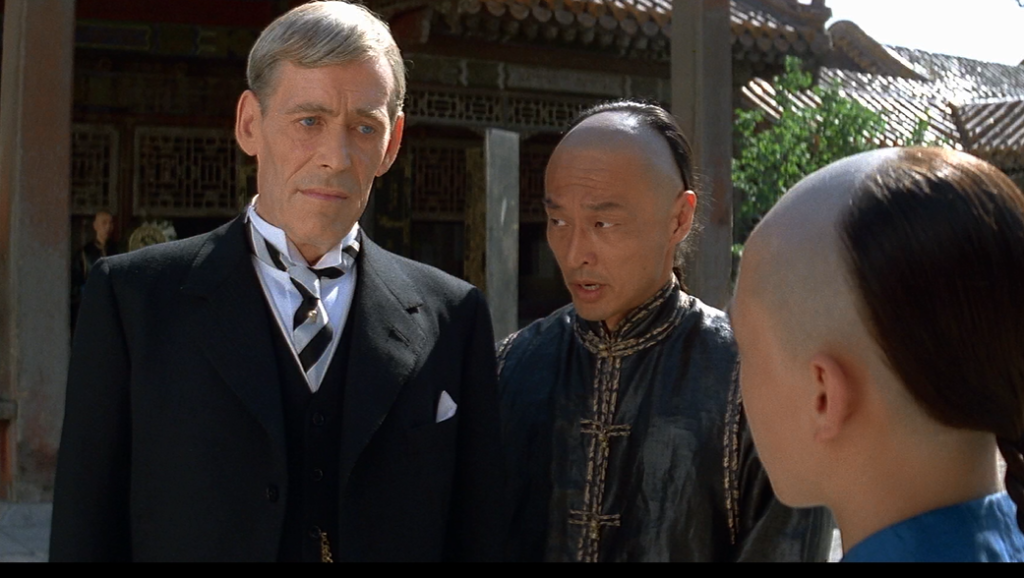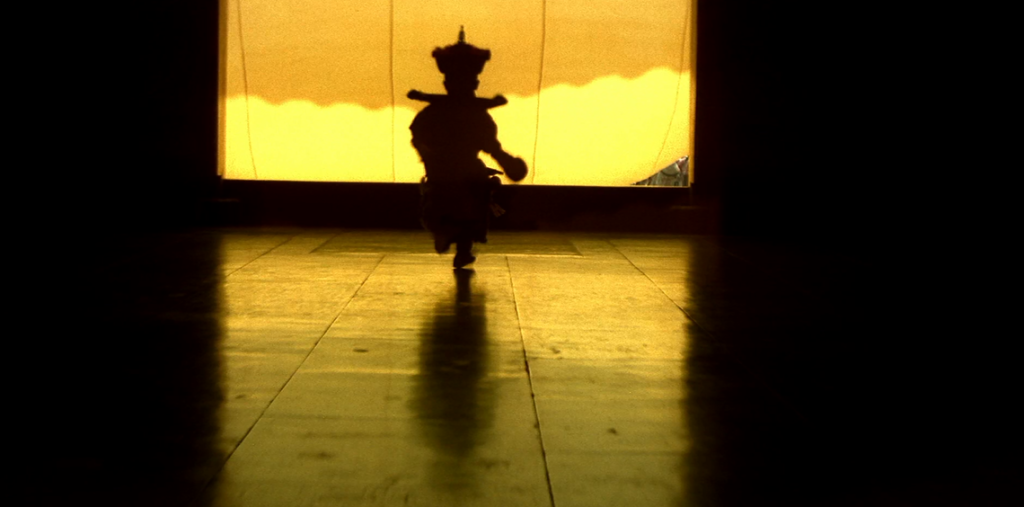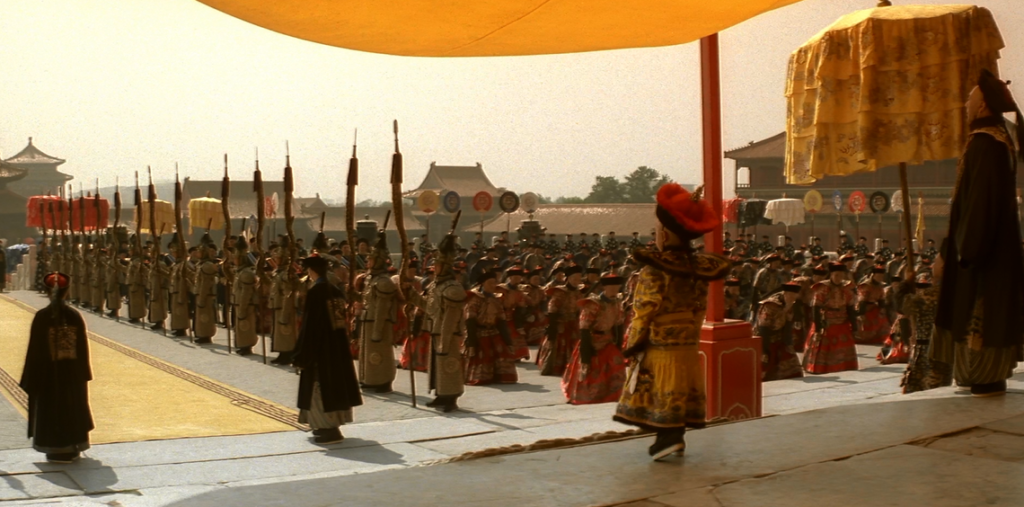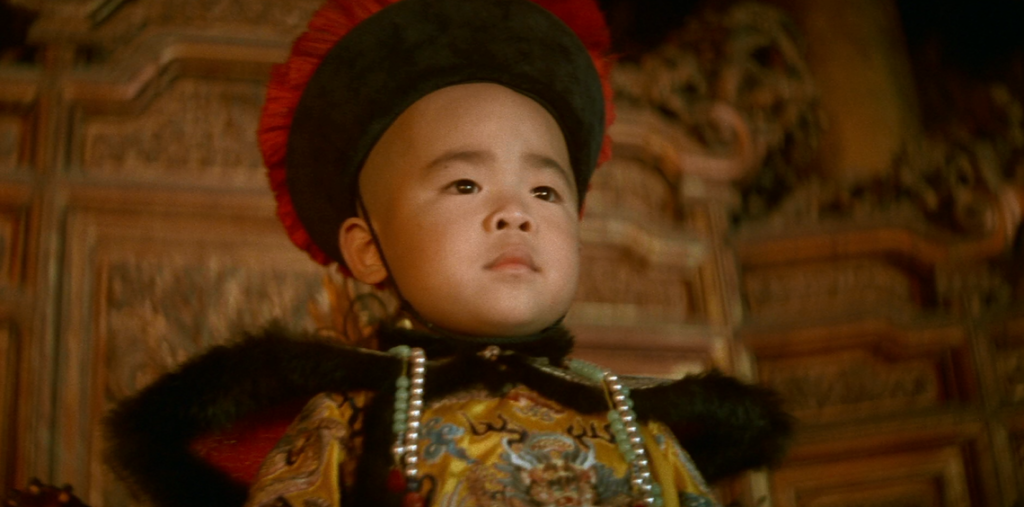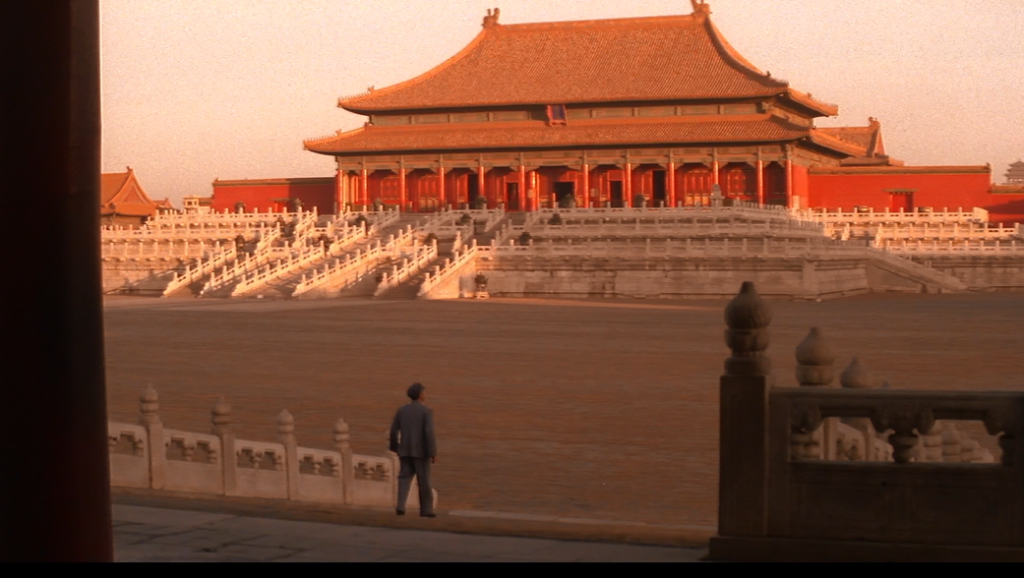The Last Emperor
Director: Bernardo Bertolucci / 1987 / 2.00:1 Aspect Ratio / 163 Minutes
by Mike Restaino
[This is the first in a series of essays reconsidering notable and perhaps unheralded films from the vault, pieces of cinema that are more culturally imperative and artistically pristine in retrospect than they appeared at the time of their release.]
“It’s funny how the colors of the real world only seem really real when you watch them on a screen.” – Anthony Burgess, A Clockwork Orange
- Sweeping Multi-Culturalism. Edward Behr’s book The Last Emperor is a door-stopper, an enormous, bloated volume crammed with historical research and deeply-chronicled relevant artifacts. While Bernardo Bertolucci’s film certainly incorporates the overall conceit of historical events and the cast of characters from Behr’s work, there’s way more going on in his Last Emperor than meets the eye. Consider this: the guy who shot Apocalypse Now and The Conformist is the D.P. for a movie filmed on location in China by the director of Last Tango in Paris starring a Brit (Peter O’Toole – Lawrence of Arabia himself!) with an esteemed international cast and crew, with a score co-written by the lead singer of Talking Heads. The Last Emperor is a global, poly-national cinematic effort, a meaningful kaleidoscope that is reverent and considering of the past and what it can teach us, but also audacious and curious in a fashion other films of its era were not.
- The Macro and the Micro. There are gimmicks and constructs aplenty within Bertolucci’s film, but every device he and his team utilize have established bases within the cultivation of the movie’s dramatic progression. The flash-forwards set within war camps are parallel to those David Lean employed in Doctor Zhivago, which are full of pretense, but these tropes are countered by a human introspection within many of the movie’s moments that is often disarming. When we’re first introduced to John Lone as the adult emperor Pu Yi, he’s a Sphinx, an impenetrable enigma who can’t be read or emotionally deduced in any rational fashion. But when he sees a face he recognizes in the concentration camp he’s been relocated to, in a glorious instant, he transforms from broken refugee into a bright-eyed ten-year-old, excited at the simple prospect of play with an old friend. This is the genius of Bertolucci so deftly on display in The Last Emperor: he fuses big-Hollywood entertainment set-ups with an emotional force that can grab your heart and rattle it like a toy.
- Impeccable Craftsmanship. The Last Emperor won nine Oscars – editing, sound, score, screenplay, costume design, cinematography, art direction, director, picture – and upon revisiting the picture, it’s easy to bask in the extraordinary achievements of the movie’s many acclaimed participants. That being said, Vittorio Storaro’s photography probably merits a VIP award. In the film’s original 2.00:1 aspect ratio (preserved on Criterion’s lavish Blu-ray edition), Storaro seesaws between lush primary colors and muted desaturation, and the results are enough to take your breath away. Once you catch a glimpse of a pearl inserted into the mouth of a dying dowager or witness Peter O’Toole riding around The Forbidden City on his bicycle, the hook will be set. Soak it in.
- Tourist Cinema in the Late 1980s. Consider the access Bertolucci and his team were granted here. Much of The Last Emperor was shot on soundstages, to be sure, but the external locations utilized are indelible. I’m not sure what the status of access is with The Forbidden City in calendar year 2016, but this motion picture offers a look inside the walls of that locale that is stunning, even with the volume turned off. Regardless of the innate narrative value within Mark Peploe’s and Bertolucci’s screenplay, as a snapshot of a masterful architectural structure many of us will not have a chance to step foot in, The Last Emperor is an invaluable movie relic.
- The Immortal Cricket. Upon returning to The Last Emperor, the plot device of a pet cricket the young Pu Yi receives during one of his first coronations might appear to be too on-the-nose and precious for its own good, but I’d argue that it works considering the poly-aesthetic constructs of the movie as a unified whole. The Last Emperor is a movie chronicling a certain time and historical space, of course, but it’s not about the microcosm it investigates. Bertolucci’s masterpiece is a film about reevaluating one’s relationship with history, about how the maelstrom of passing time has a tendency to upend anything and everything in its scope. The Forbidden City, when we first glimpse it, is a marvel of the world, a testament to the constructional prowess and fortitude of the high-class Chinese people of its age. Then it’s a place where the dethroned emperor plays tennis. And finally, it’s a graveyard, a tourist attraction, a sterile vacuum.
The Last Emperor, especially now that it wears the sheen of thirty years of hindsight, is a magnificent thesis on the voyage of time, of humans and their evolving heritage, of the glories and quicksands of nationalism in a tumultuous world. It’s a dense film, one that offers more questions than answers, but for history buffs especially, it’s an odyssey of impeccable cinematic prestige and integrity.
Mike Restaino is a filmmaker and writer based out of Incline Village, NV. He has spent more than twenty years as a movie critic and lecturer and takes every opportunity he can to work with MYTHWORKS and Pamela Jaye Smith.
